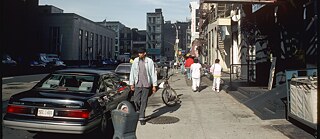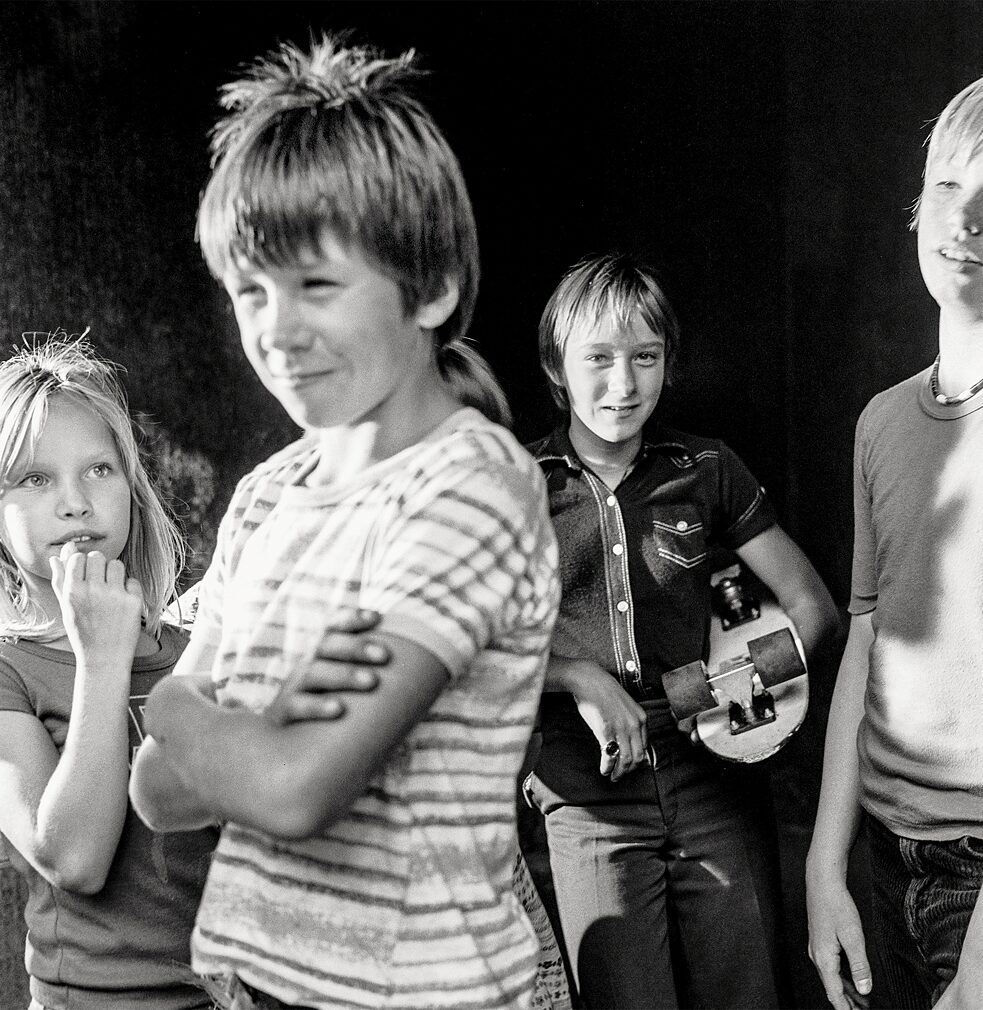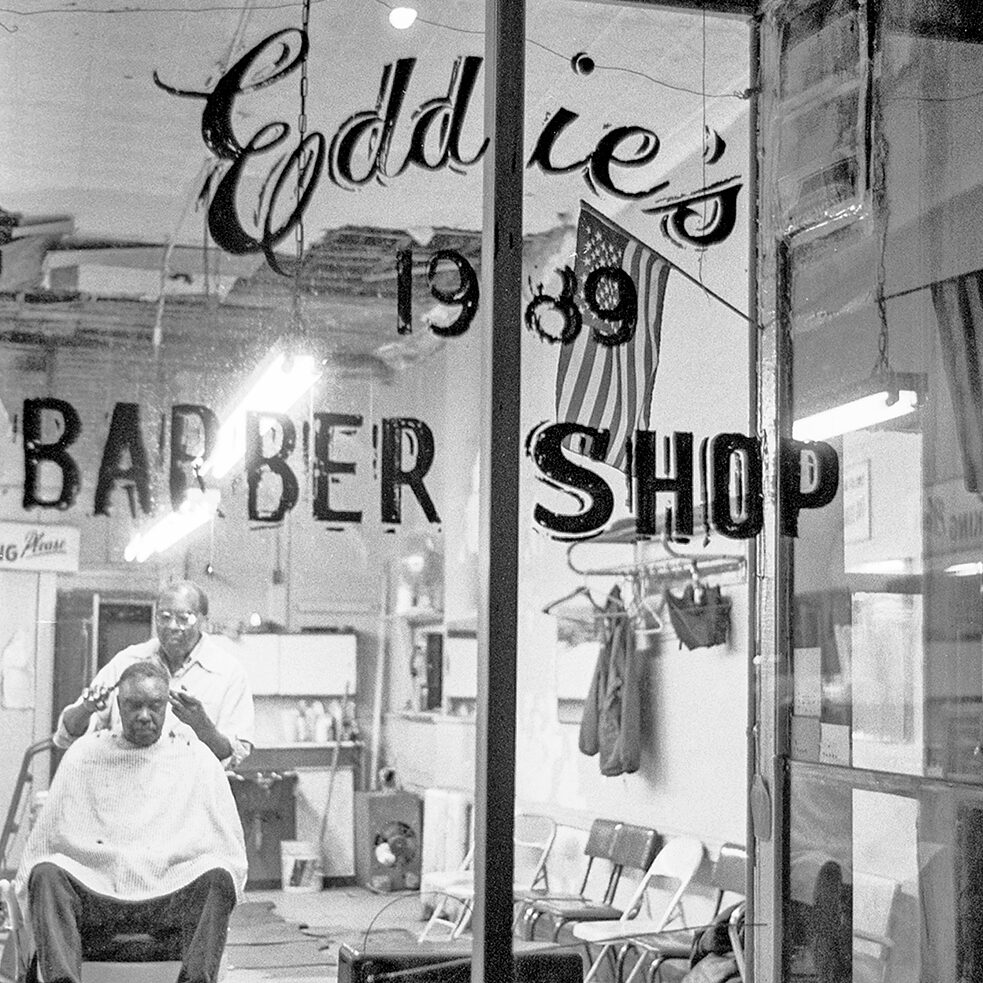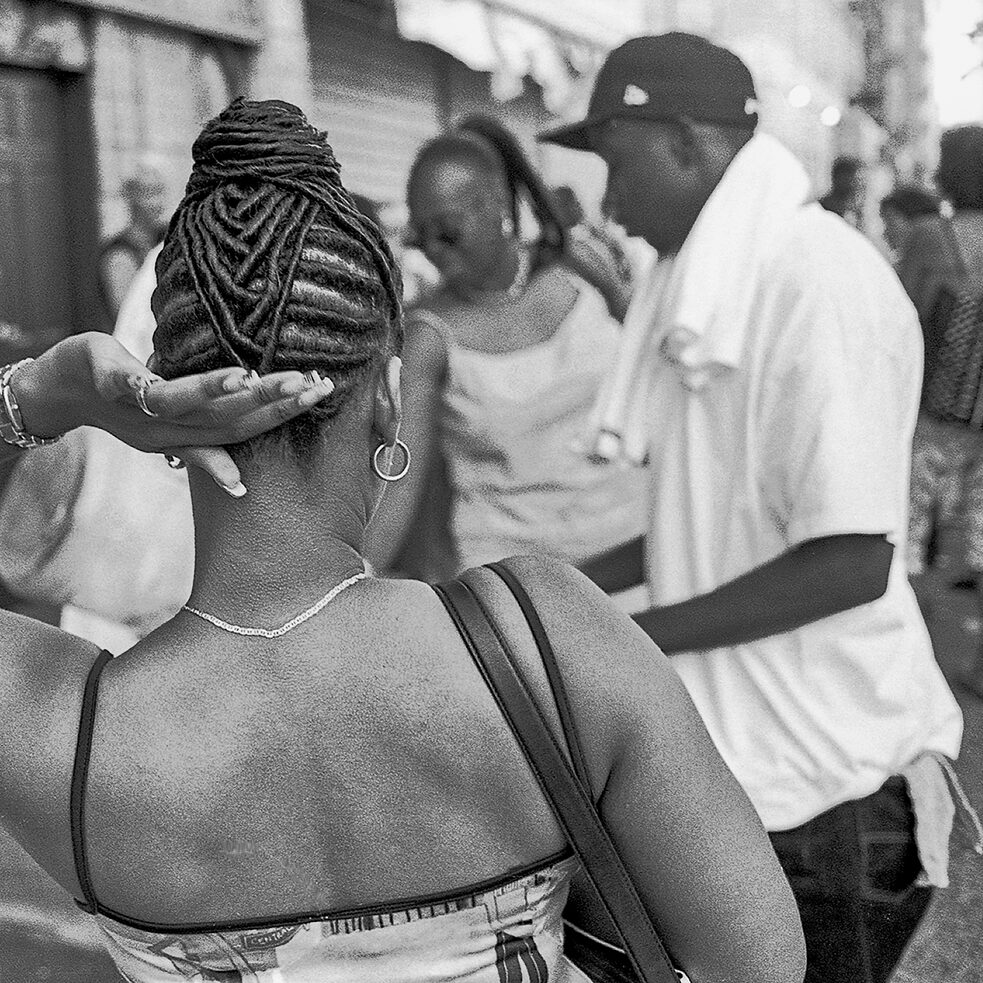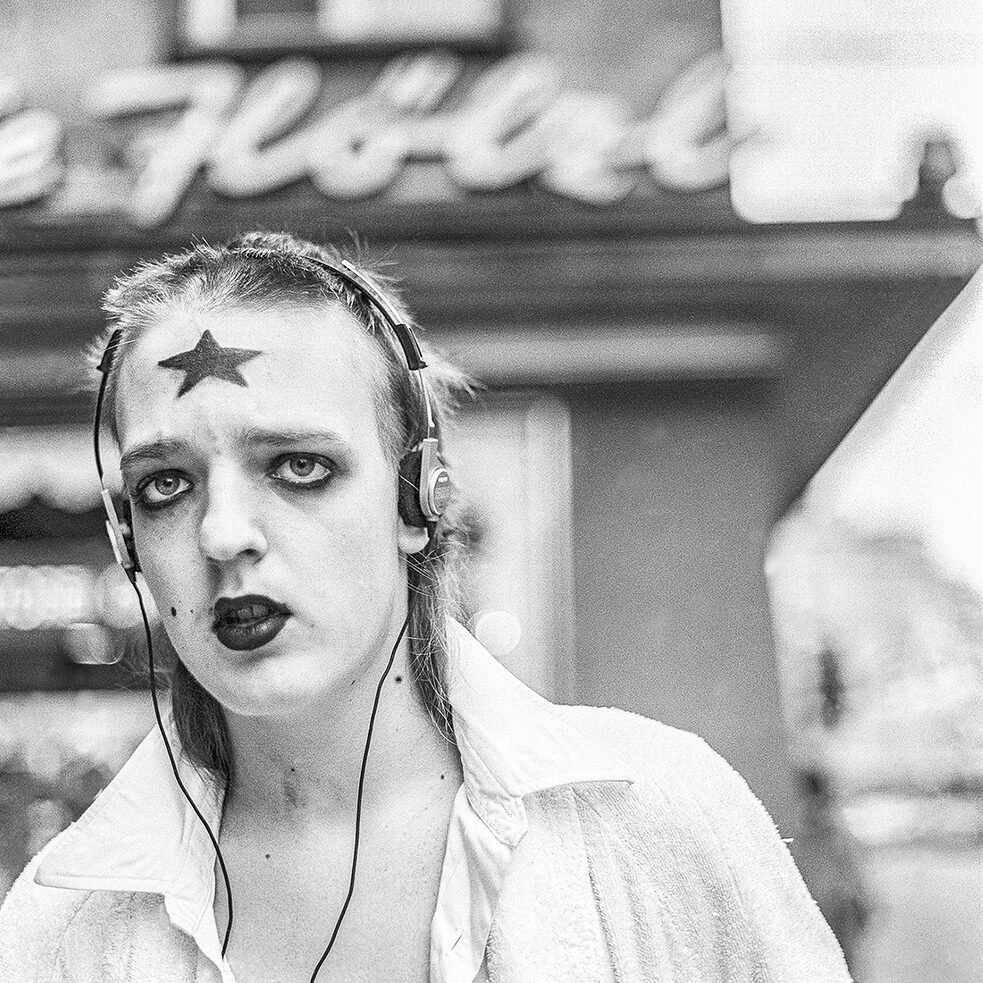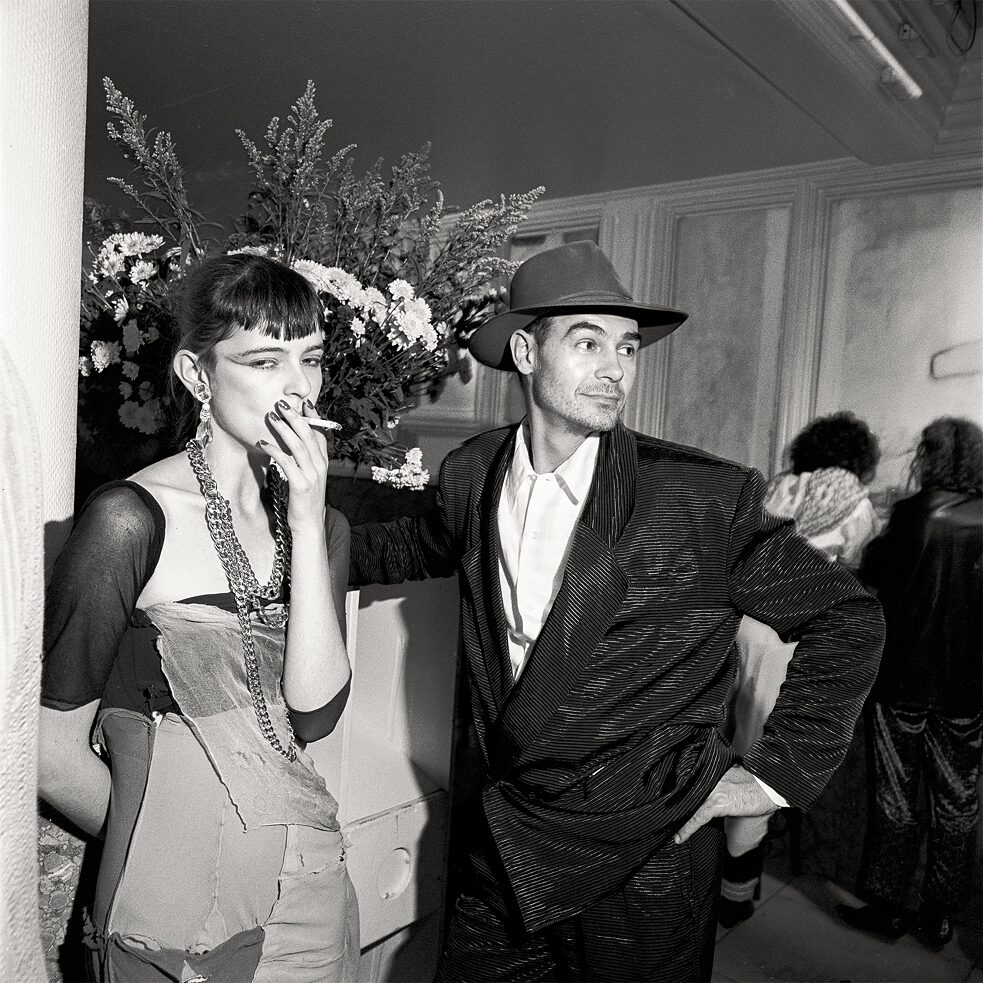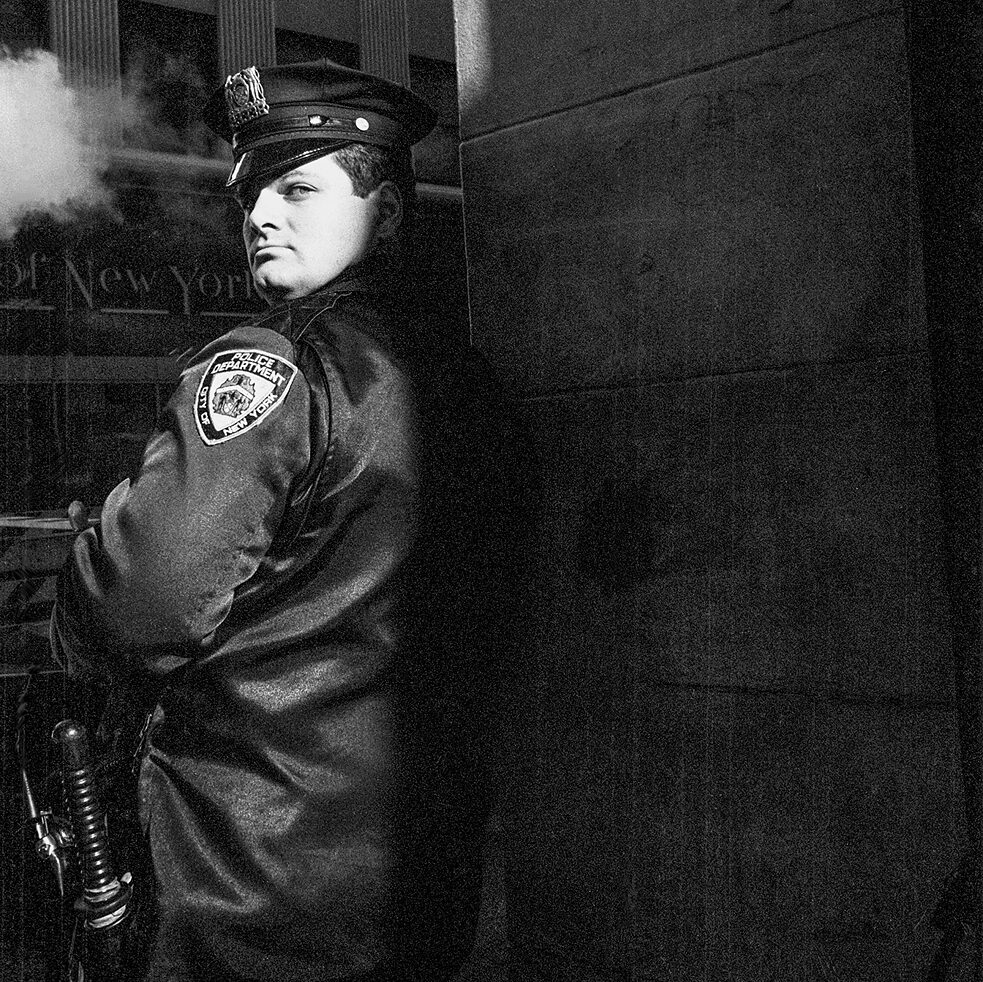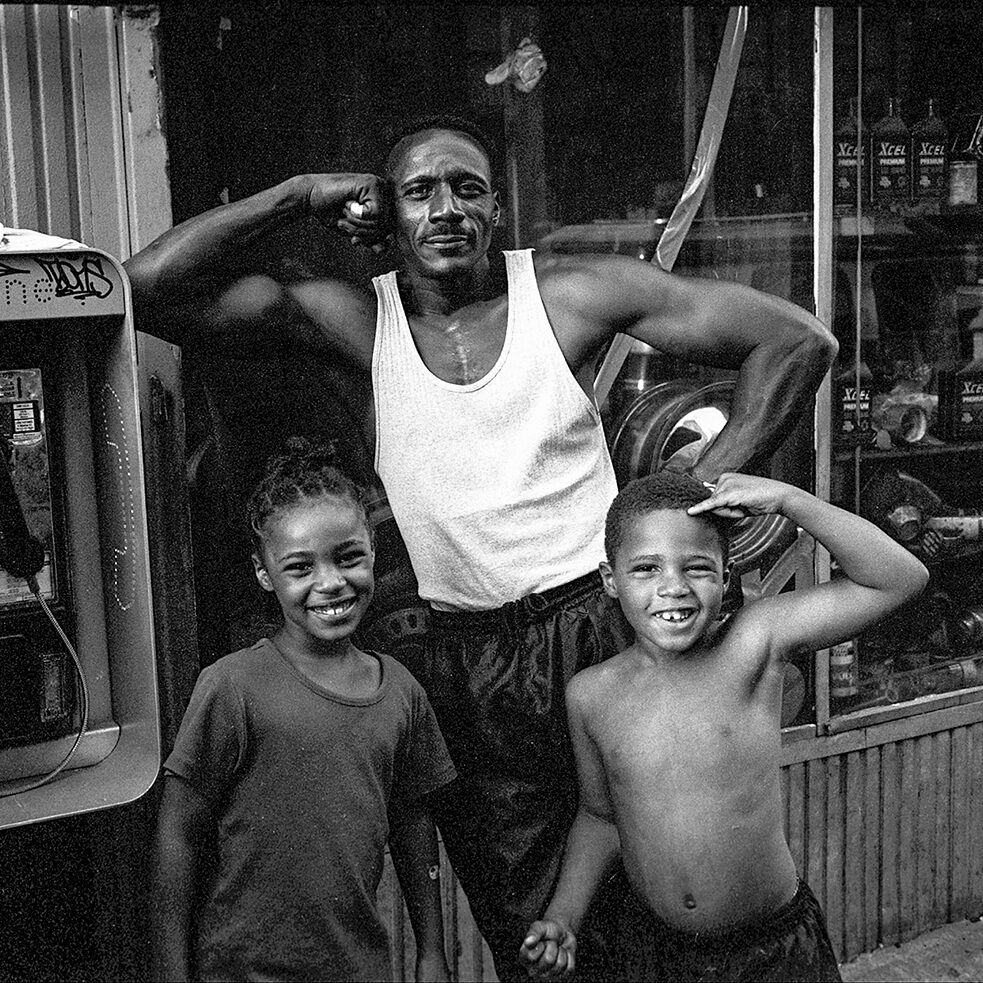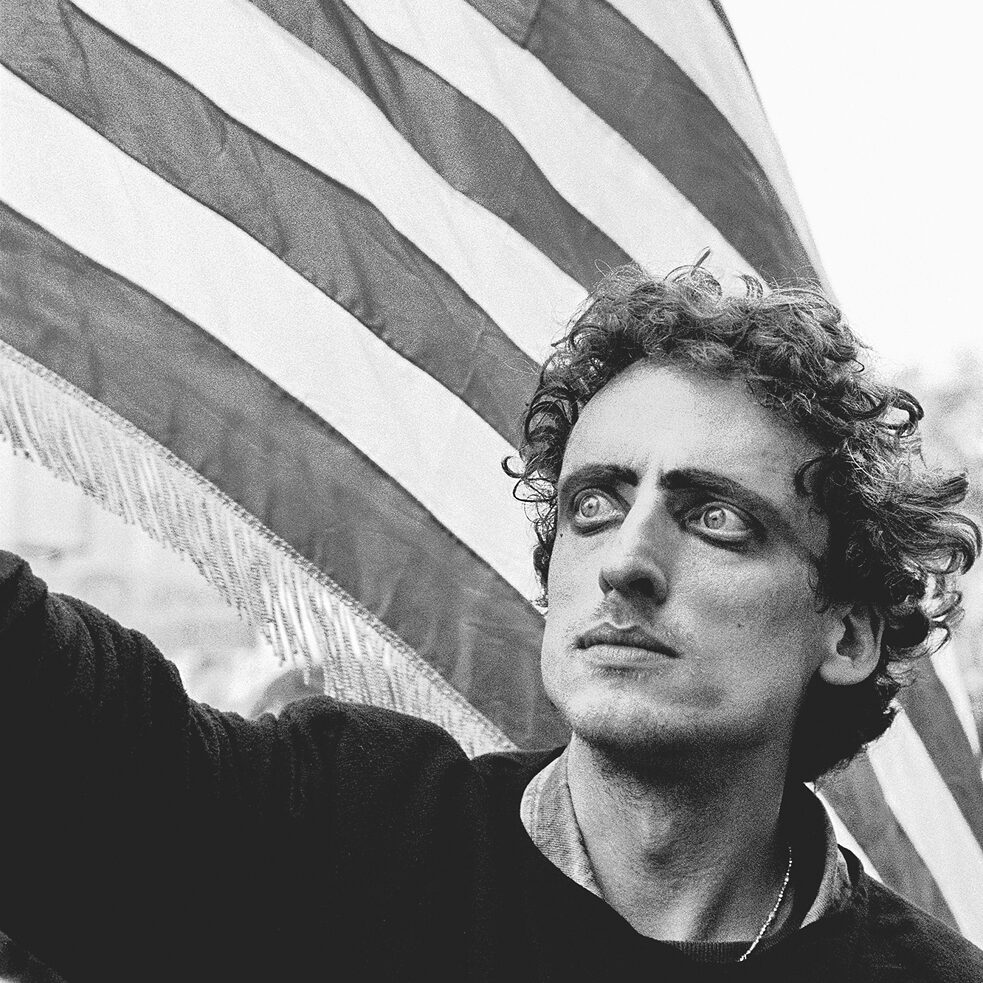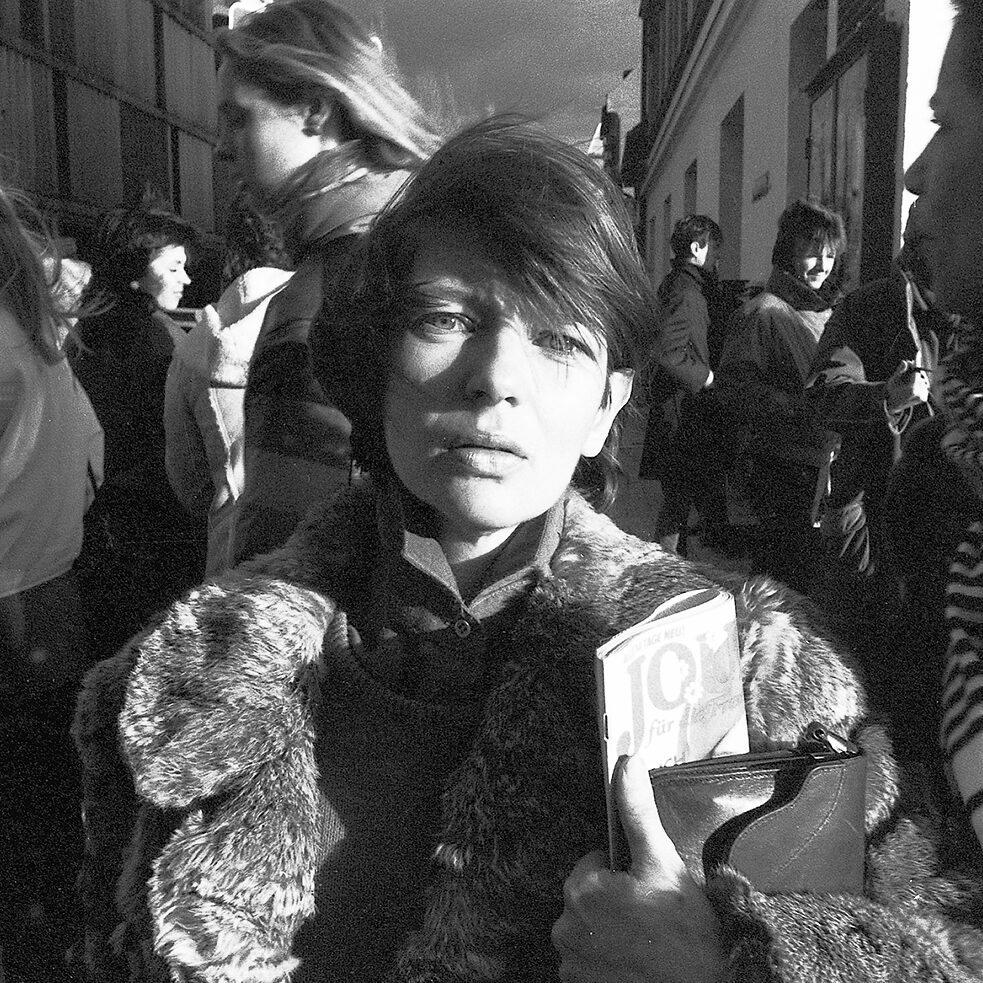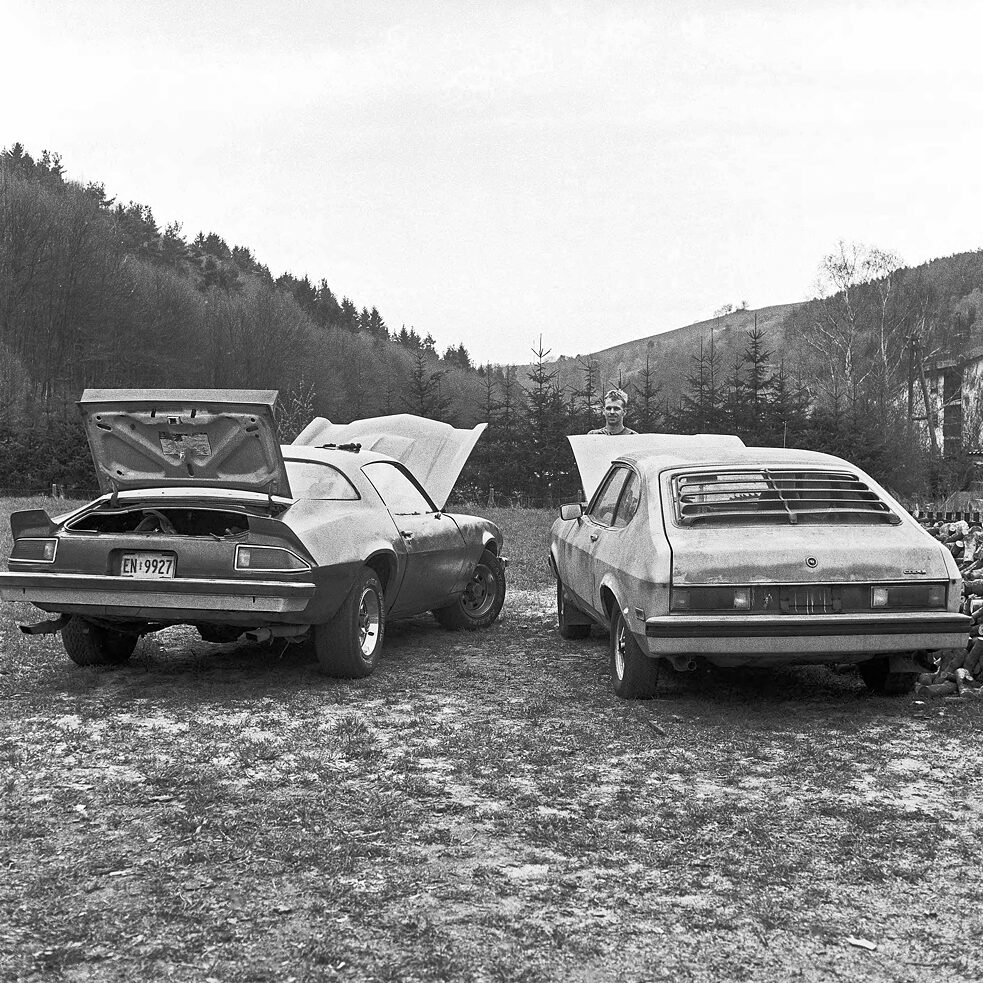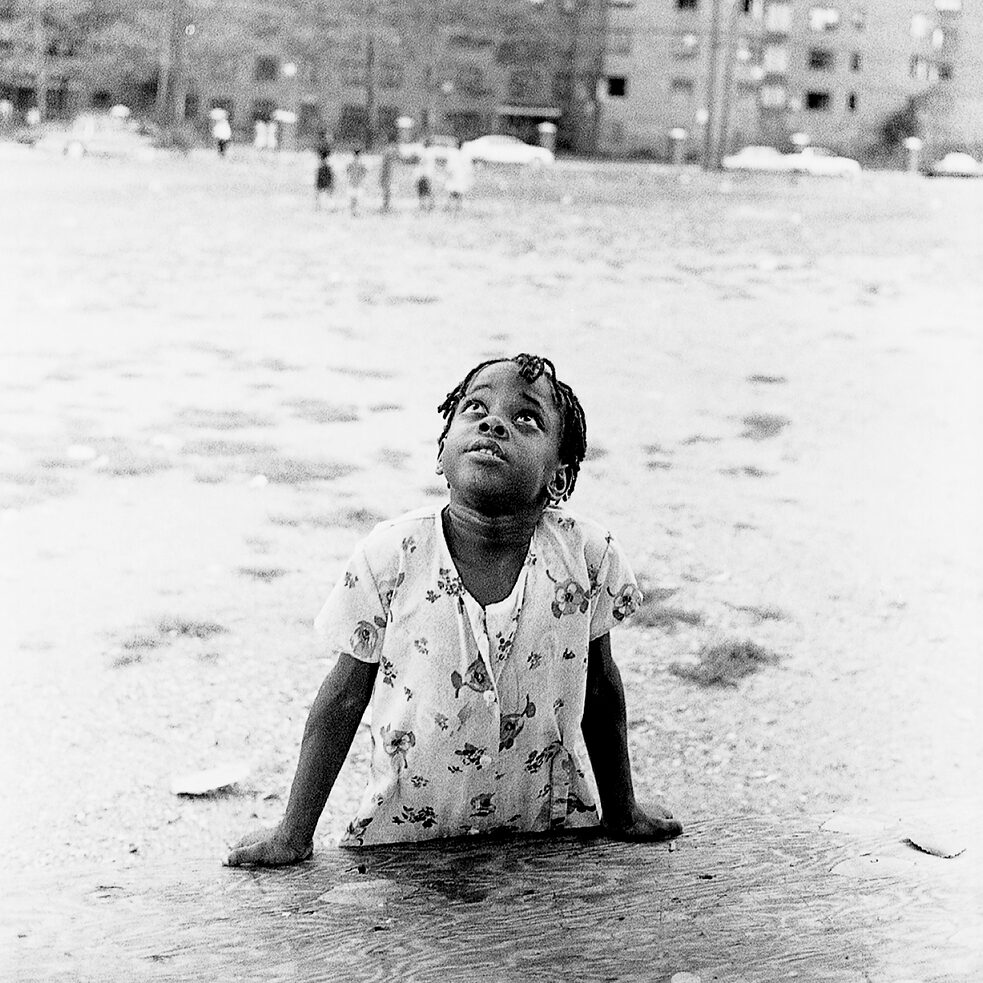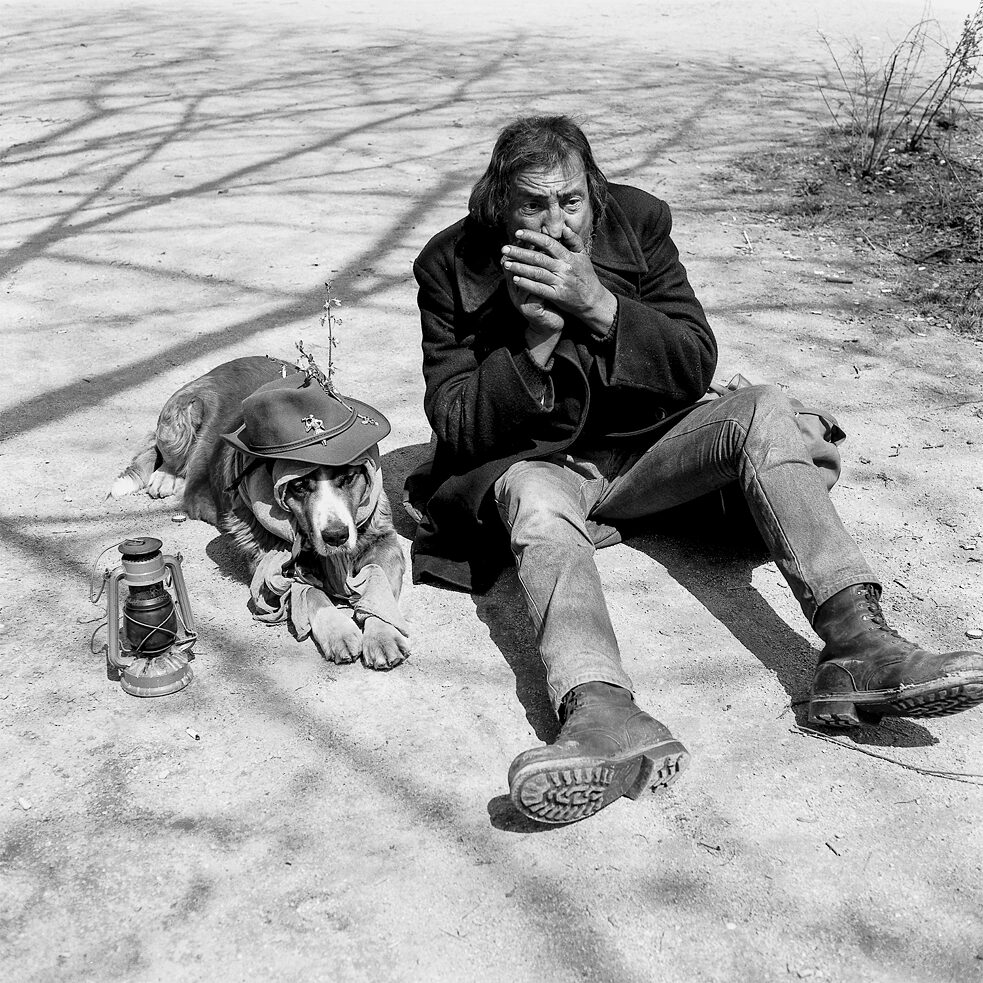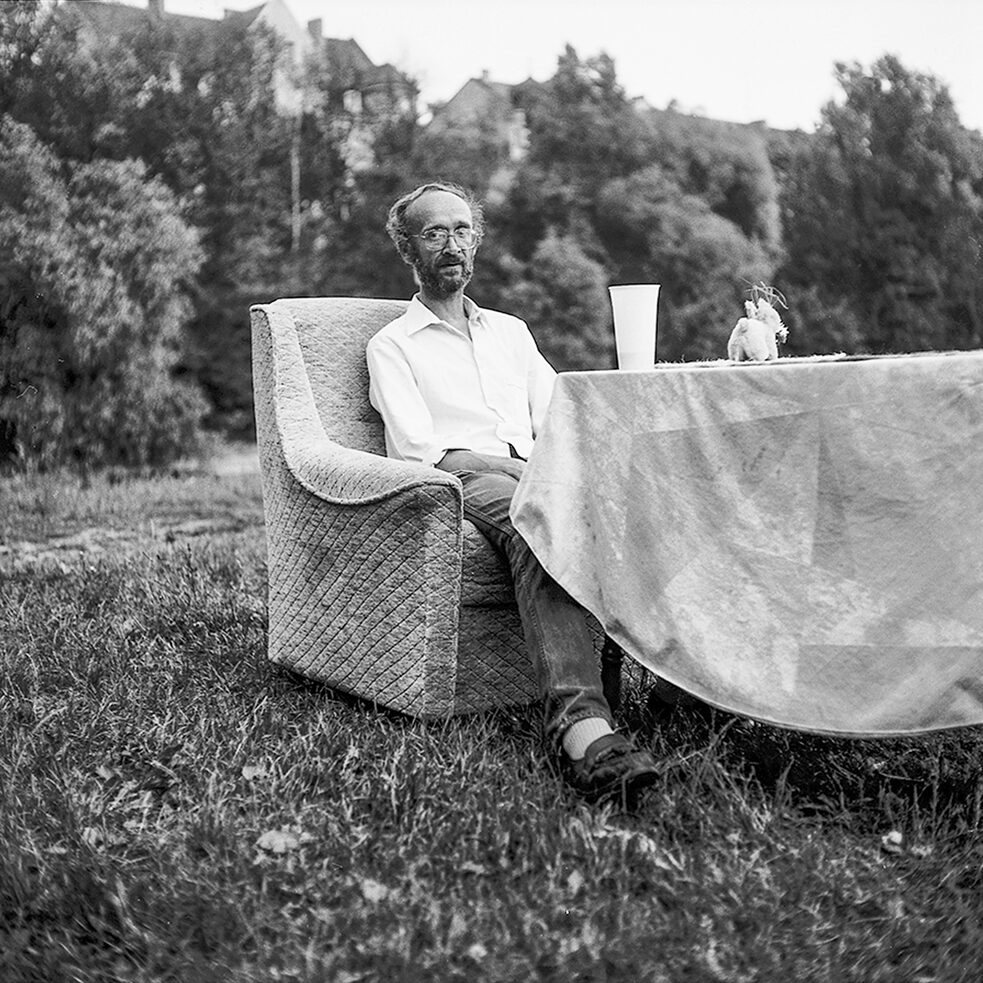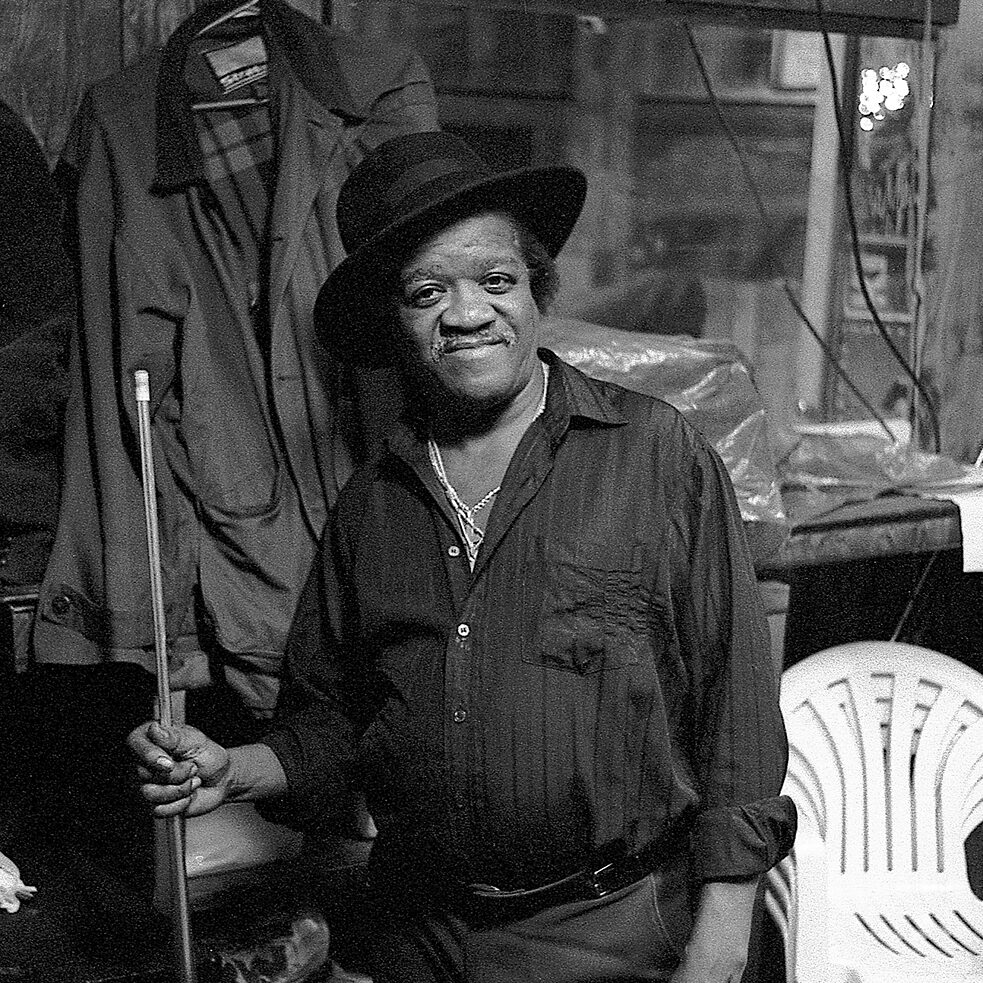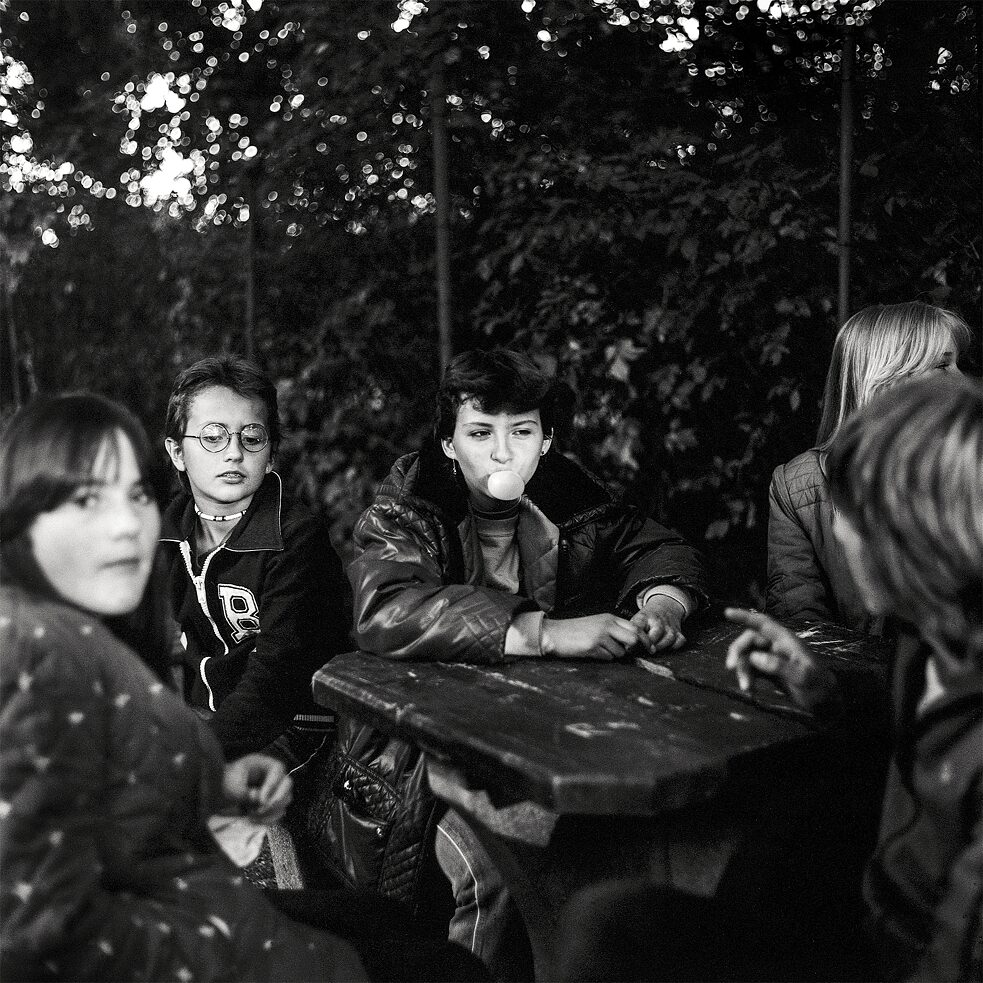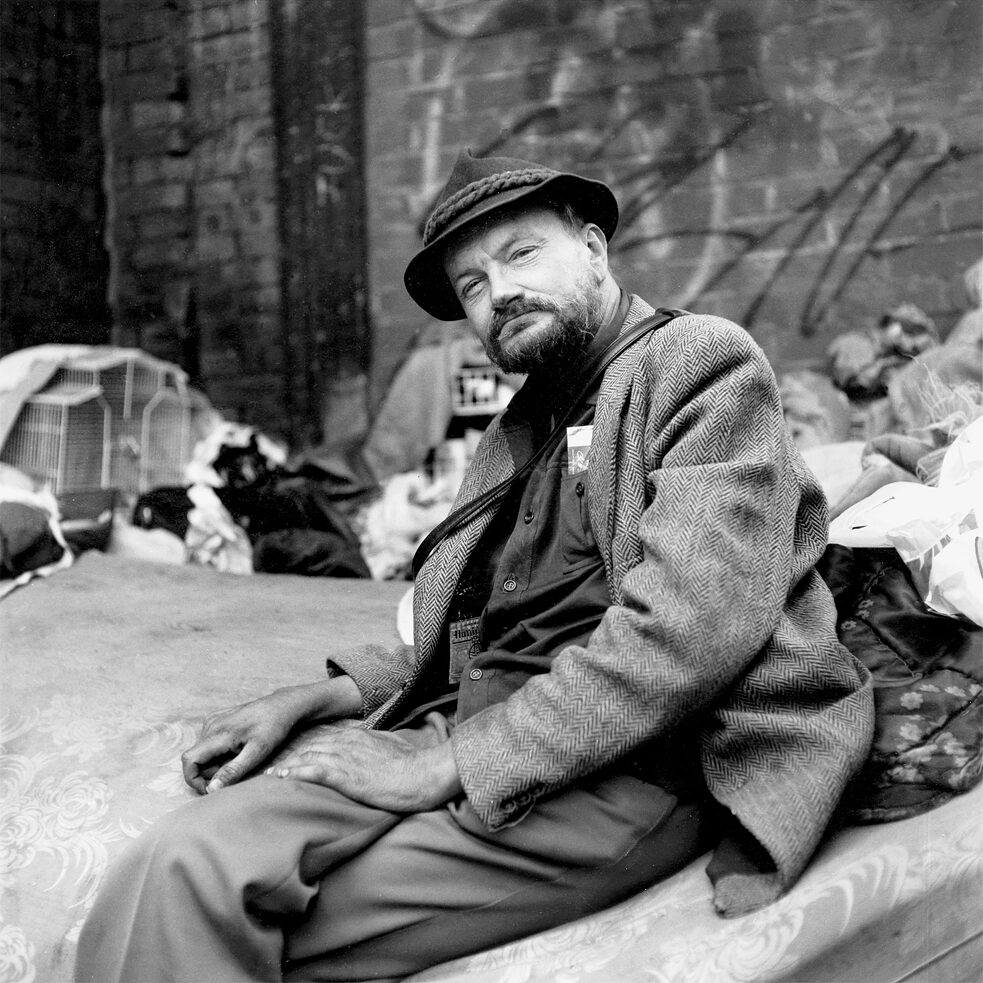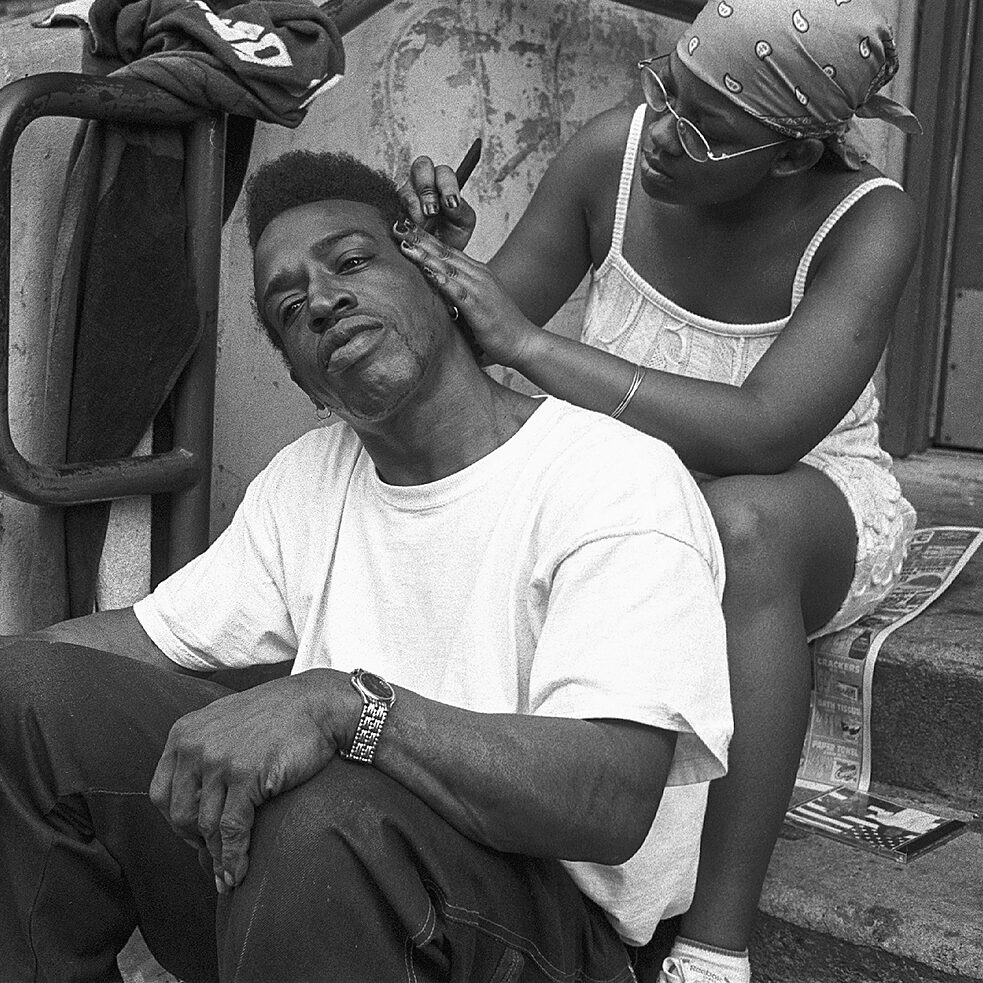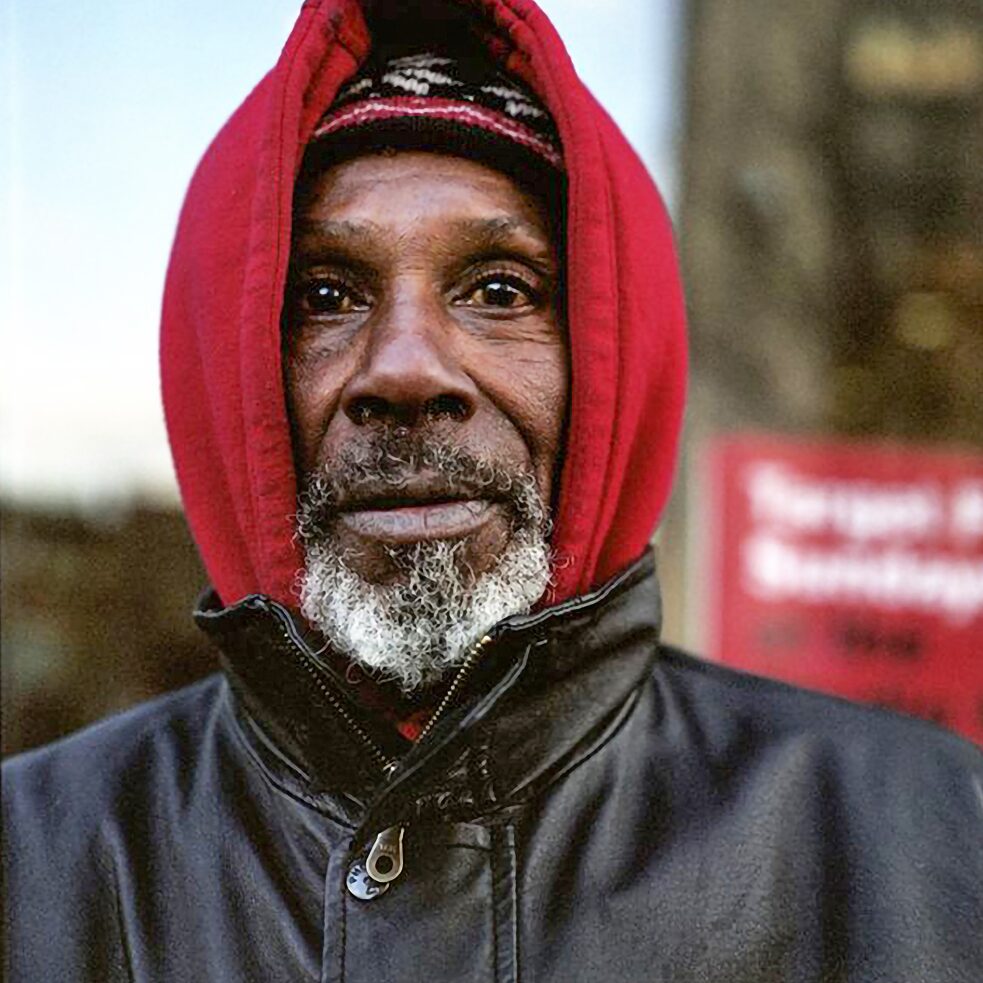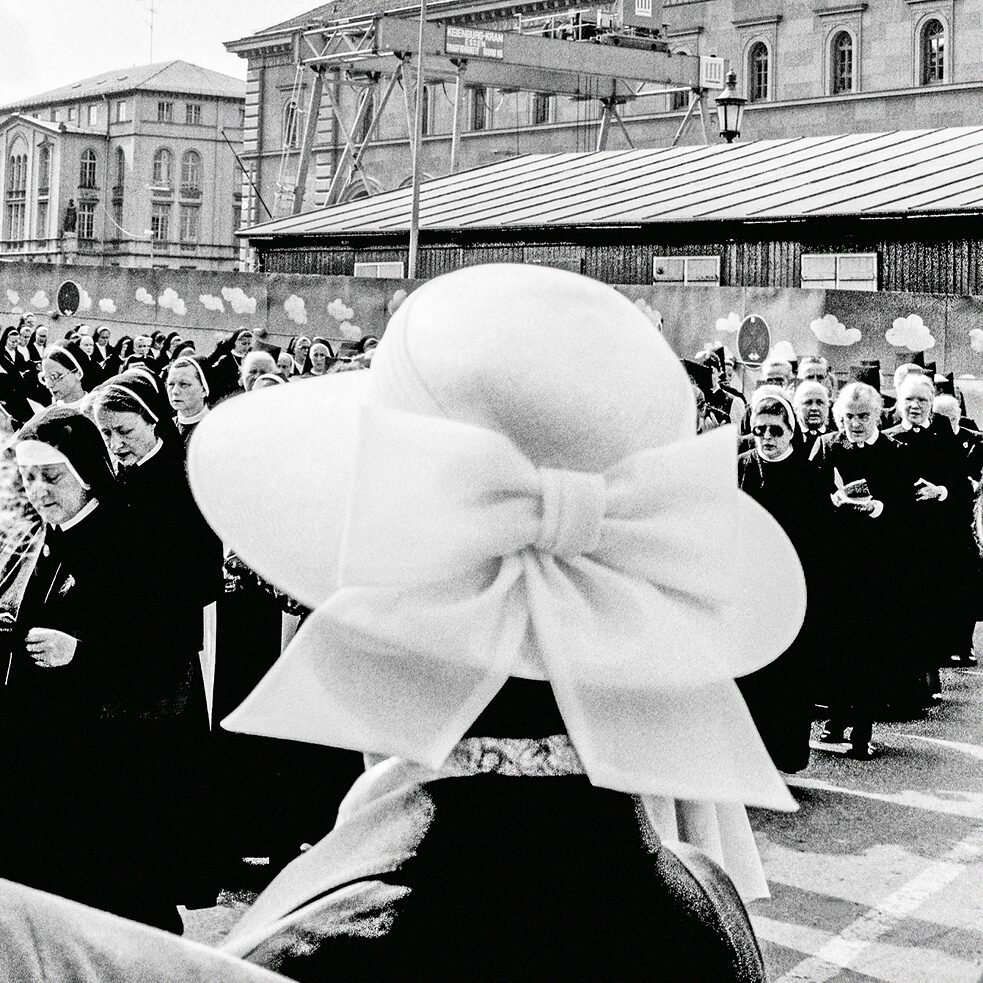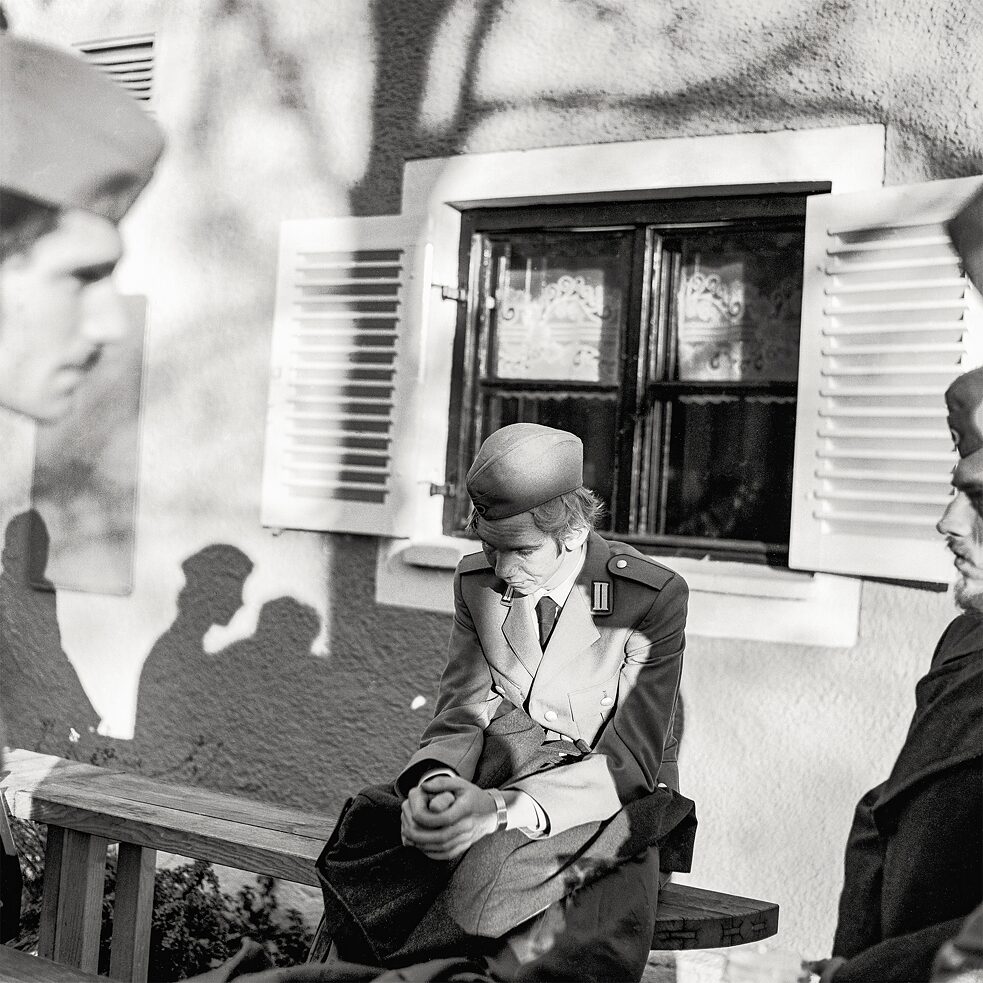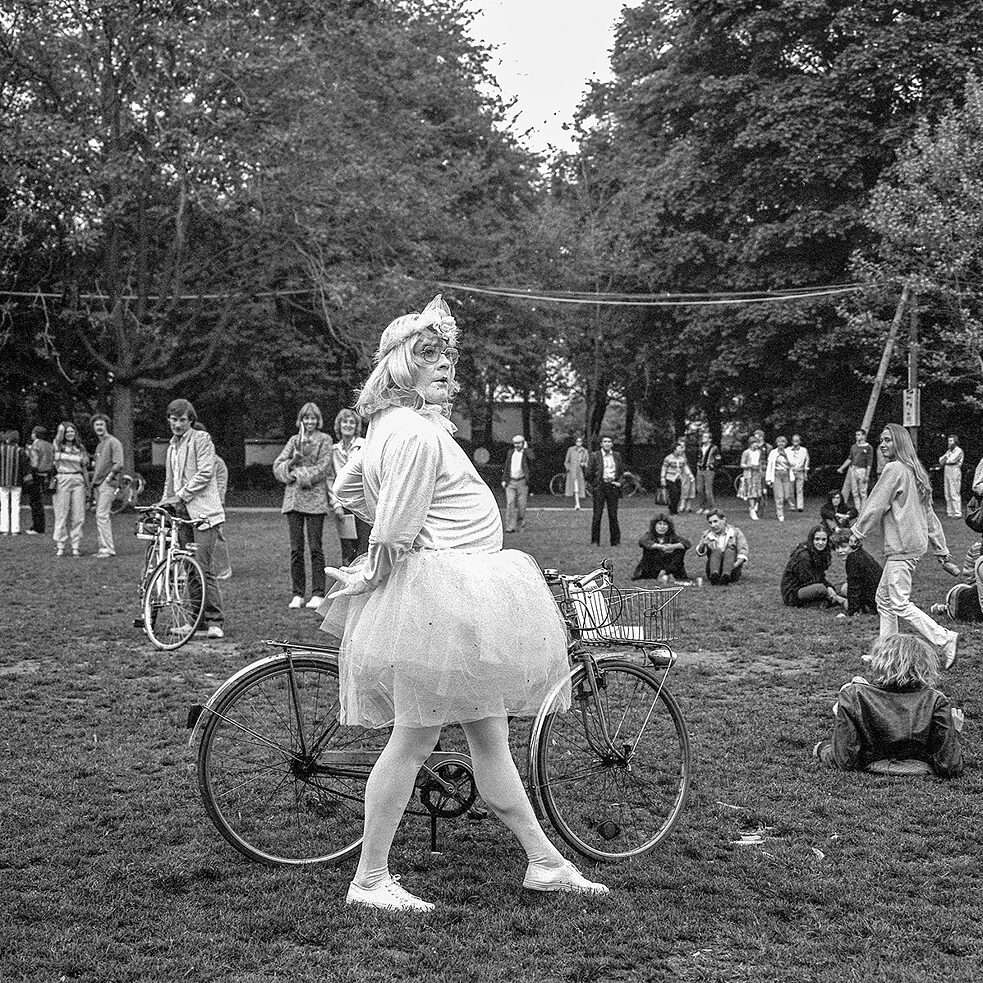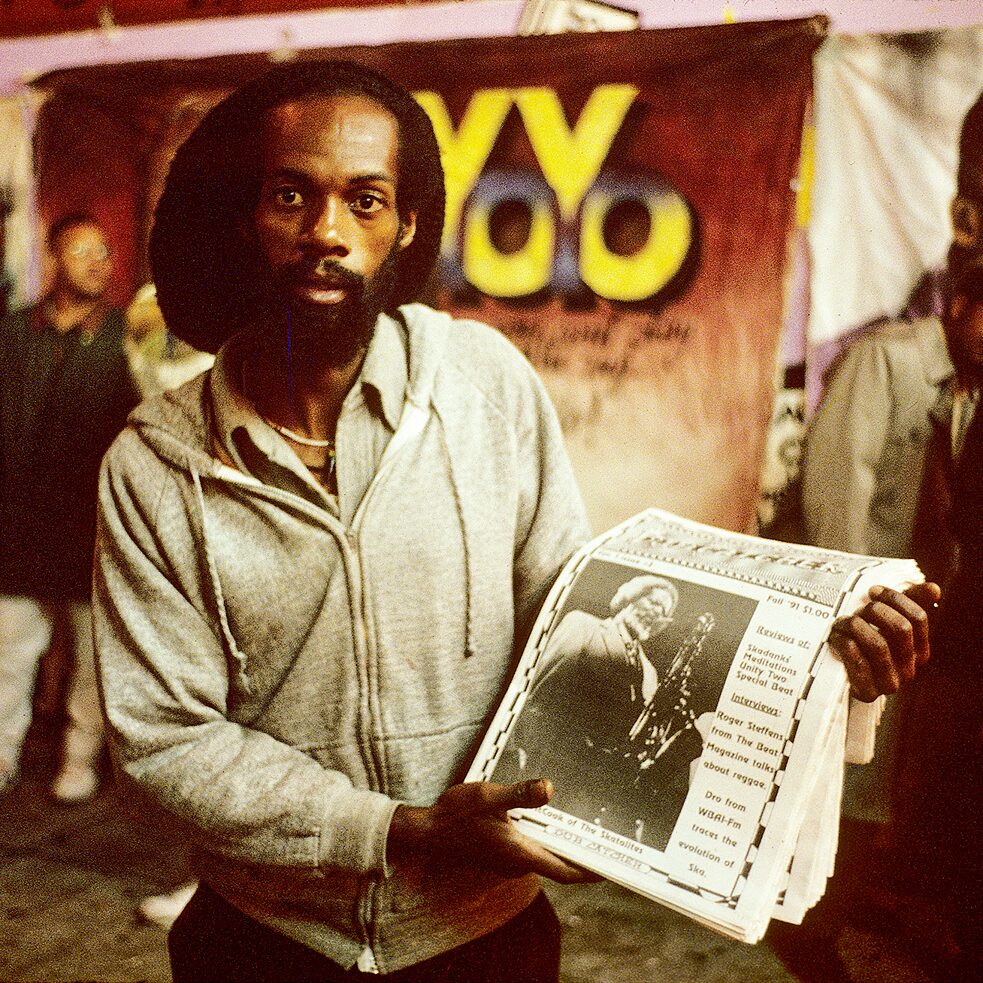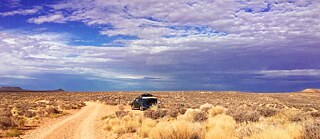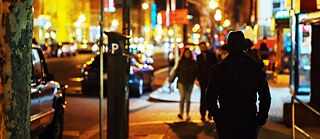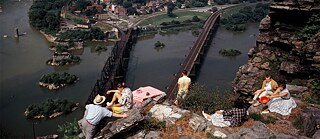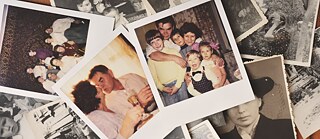Embracing the City
The Street
As a lifelong photographer and filmmaker, Harald Rumpf has spent decades exploring the cities that his subjects call home. In this retrospective of his work, Harald builds on his film and photography projects that took him into the streets of cities like Munich and New York by combining archival material with new interviews and narration.
Listen to this episode: Apple Music | Spotify | Download
This sentimental piece comes from Harald Rumpf. Harald is a cinematographer and photographer from Southwest Germany. He has made many films, including “Hip Hop: A Tale From the Hood,” which follows the story of two rappers in New York City, I.G. Off and Hazadous. In this retrospective of his work, Harald builds on his film and photography projects that took him into the streets of cities like Munich and New York by combining archival material with new interviews and narration. The music in this episode comes from Blue Dot Sessions, Stani Kirov and Marc Tepelmann, and I.G. Off and Hazadous. Special thanks to sound designer Marc Parisotto (additional recordings: Benedikt Mühle), voiceover actor Wolfgang Jörg, and translator Craig Reishus who provided their services for this episode. And a big thank you to the interviewees — Sandra McKenzie Murphy, Melissa, Dr. Tobias Widmaier, Bernhard Claus, Brian, Arne Moos, Frau Windgast, Hazadus, and I.G. Off (R.I.P.); also to Claus Biegert. The featured photo was taken by the producer, Harald Rumpf. View a collection of photos from Harald’s archives in the photo gallery below:
Transcript
Harald Rumpf: Hello, my name is Harald. I’m a photographer and filmmaker who loves working in the street, seeing who and what comes my way. So, let’s talk about the ‘street.’ Just what does it mean? Streets are common enough. But what do we understand by the word? Streets, paths, roads, highways ... Everyone uses one as soon as you leave home. In the big picture, roads have always been the facilitators of travel, trade, and conquest. They bring people together. These could be expressions of power but also expressions of hope. A way to go somewhere else. Or escape routes to flee oppression and misery. It’s the same today. The smaller picture is a private one, enriched with stories. So, let me go back and start on the small road by a farm in a tiny village in the Southwest of Germany. This is where I come from. The road was our playground — cars were, so rare that we hardly ever had to make way for one. I often rode along on a neighbor’s farm tractor, sitting in a cloud of diesel fumes and watching spellbound as the huge tires left patterns in the clay. Almost every day, we children would gather at the side of the road as an American convoy came driving through our village, the smiling GIs tossing candy to us from their jeeps and trucks. As a four- or five-year-old boy I would imagine that Fury, the famous television stallion, might charge over the hill at any moment and greet me. The United States seemed quite close by. And in a way, the U.S.A. had long been nearby. Many people from the surrounding region had emigrated to the United States starting in the early 1800s. In the 19th century, hundreds of thousands of Germans left their homeland for good. My area of Germany had its own special product: itinerant musicians. Thousands of them came from my region, the hilly country and villages of the Western Palatinate — what we call the ‘Westpfalz.’ They embarked on foot, on wagons, and then by train and ship to travel the world. Many, maybe even most, of these musicians would return home after months or even years abroad. Typically, the musicians would leave home in small groups of four to ten men. My great-grandfather was among them. There is only one surviving photo that shows him as a member of a band of six, holding a clarinet in his left hand. Over the course of some 20 years, he traveled with various bands to the United States several times. [MUSIC] This piece, “Frühlingsklänge,” was composed by Wandermusikant Otto Schwarz and newly arranged and recorded by Rundfunkorchester des Südwestfunks in Germany. I spoke with Dr. Tobias Widmaier who has been studying the itinerant musicians of this region for years.
Dr. Tobias Widmaier: In the beginning they wandered to France, to Belgium, or to the Netherlands. The German word for ‘itinerant,’ or traveling musicians, ‘Wandermusikanten,’ tells us that early on, for the most part, they ‘wandered,’ sie wanderten, pathways, shortcuts, or country roads. As the transportation infrastructure improved during the 19th century, so too did their ability to travel further and further.
[MUSIC]
Harald Rumpf: The first time I left the area was at the age of 15. It was supposed to be the first day of school, but I cycled two hours down the road to the border with France. Near my hometown, I waved at my classmates on their way to school. I want to visit my pen pal in Chaumont, I told the border guard. He said: What? On the first day of school after vacation? He then got on the phone and called my father to come pick me up. The following year, I considered myself old enough to undertake a trip alone to southern France. Two weeks of construction work in Germany had put enough money in my pocket to pay for my trip, which was inspired, in part, by a movie of that time: “Easy Rider.” The myth of the road was there, the ’60s soundtrack. Inside me: a fleeting patchwork of scenes and moods, shaped by the United States of America. The night before I left, I felt pretty queasy. After I left the house, I felt fine. But what about a boy whose parents had sold their belongings in order to travel in the 1850s to an unknown country like America? Could the family stay together after arriving in America? Or would it be ripped apart by thieves pretending to be helpful agents? Would the family need to get more money from home on credit? In those days, a 13- or 14-year-old like my great-grandfather would be in a fever of excitement before his first trip with a band of musicians traveling together on a steamboat. One of them might be insecure about his future, another might have a clear plan about where they could make the most money. But both full of hope. [MUSIC] To me, traveling was much easier compared to the fate of those two. I just had to wait on the roadside, hold my thumb out in the wind, and wait until a car stopped to pick me up. On the road again. The reality I found on the road satisfied and inspired me. The second car stopped for me on the highway near Mannheim near the Rhine River. A teacher on a trip to Southern France gave me a long ride and let me off very close to my destination early on the second evening. The Ardèche region, some 900 kilometers away from home. Near where the Ardèche River flows into the Rhône. On a small country road, I wandered past Pont-Saint-Esprit. The dark greeting me with the loud trill of insect life and smells I didn’t recognize. [TRILLS OF INSECTS MERGING WITH THE SOUND OF A RIVER] Now, time stood still. Dog days lay upon the landscape. The only noise was the murmuring water of the shallow Ardèche river, where I was lying, cooling down and daydreaming. I discovered loneliness as company as well, when I was too shy to join other young people. After a week, I was back again on the asphalt. Some years later, I became a photographer, a street photographer. Photography helped me approach the world. It takes part in life. Exploring, celebrating, and suffering. It is an instrument for me to collect fragments of a personal reality and put them together into a mosaic. These images may look different from the image you see of yourself in the mirror. American photography was a big inspiration in helping me find my way. Robert Frank and Diane Arbus, to name at least two famous photographers, were important to me. [THE SOUND OF A TRAIN HORN AND A HARMONICA] Even though the art of each was so different from the other, I felt a kinship of temperament with both of them. Robert Frank traveled on a grant to photograph his version of America. He didn’t chase after social meaning like his mentor and friend Walker Evans, who, together with Dorothea Lange, Gordon Parks, and others, documented the flight of thousands of farmers leaving the Great Plains or the Dust Bowl during the Depression, taking Route 66 to California. When his book “The Americans” was published in 1958, critics wrote: If this is America, we should burn it down and start all over again. Frank poured his melancholy about America into the photos he took. [HARMONICA] I met Güni for the first time in Munich’s English Garden, Germany’s biggest city park, similar to Central Park in New York. Güni was sitting in the middle of a roadway with his dog Lady beside him and didn’t pay attention to anybody else. They were like sculptures, draped in a net formed by shadows of the branches from surrounding trees and created on the ground. He was blowing on his harmonica just to produce sounds. You couldn’t see his instrument because it was hidden in his big hands, dark as coal shovels. Six months later, I met Güni again, surrounded by his buddies. Instead of traveling far, I began a film on a group of six homeless people. Becoming homeless isn’t hard. There’s just a thin line between an established life with daily routines, job, and family and finding yourself in the gutter. Maybe you lose your job, your home, or get divorced — or all three. In this life, you don’t need to play a game about yourself. Titles and prestige don’t matter. It’s only your personality that puts you on a place within the group. There was mutual support, even tenderness in the world of rudeness that life produces when people live with their backs to the wall. As soon as alcohol came into play, situations often became out of control. I wasn’t homeless, but being there with them, I felt like I was part of two worlds. But unlike Güni and his friends, I could return home. James and Melissa were one of the two couples in this group. Melissa was from London and had a commission for a collector of her paintings in Munich. There, she met James, who was homeless. Melissa had left Munich from one day to the other. Some 35 years later, I learned about her story when she got in touch with me over the internet. She gave up drinking very soon after arriving back in England and has pursued her career as a painter ever since. In between, she gave birth to two kids who are now adults.
Melissa: I do remember as a kid, I lived in London, and I loved — I had a little scooter, and I loved to ride my scooter around the streets. And I did start drawing on the streets — like the architecture and everything — when I was little. And when I went to Germany, obviously, you know, suffering quite badly from alcoholism, and things were very different. I fell in love with James, and that was what provoked me to live on the street.
Film clip of Melissa: I go back to England, my home and warmth and money and everything I want, do a bit of painting, have fame. But I know, deep inside, I’d always feel alone. The feeling, waking up next to James, is much better than waking up in a warm, luxurious flat with everything. Much better. (Song): Once I built a tower...
Melissa: I really like the feeling of being out there so that anything might happen I might see things, and there is so much possibility. Whereas inside, it kind of depresses me sometimes. And that’s what I love about painting outside. One of the things is just the fact that so many things could happen, you never know. And hopefully, you can include that or it goes into the painting, even though you’re just painting a static thing in front of you. I think it all — I quite like the feeling of nervous energy that we get as well, I realized.
[MUSIC]
Harald Rumpf: Arriving for the first time in New York, I felt embraced by the city like a long-lost son. Everything was new, but it was familiar. The media had prepared me subconsciously, and I was invaded by the American way of life long before I put my first step on Manhattan’s asphalt. And the grid John Randall Jr. had created in the 1850s didn’t foresee what kind of buildings would be here. For me as a photographer, it was a source of a constantly changing light with different qualities and colors and a new experience of space. [MUSIC] Whereas reaching out to Harlem was like entering another cosmos. Thinking of 125th Street, I can hear the sound of Marvin Gaye, Al Green, Nina Simone, The Temptations. At first, I stayed in a bed and breakfast that was run by François, a young Frenchman. Walking around the close-by neighborhoods with their brownstones meant hearing and saying again and again “Wassup, how you doin’?” when you crossed someone in the street. As a white man and a foreigner, I had the feeling when entering this world that I had to pay more attention to my behavior than ever before. Taking snapshots the way I did could be misunderstood. So, I turned mostly to a confrontational style that helped me talk to people in a direct way and to learn about the neighborhood and its people. You could find all kinds of street vendors — electronic devices, books and DVDs about slavery and the Civil Rights Movement, bootlegged music, countless hair salons and barber shops, Black Panther activists having their training day on top of Marcus Garvey Park. In the summertime, block parties take all over the place, and Jazzmobile, a stage on wheels, performed the “Golden Days of Jazz” every week in another corner of Harlem. Houses with wooden porches and a garden in front reminded me of the American South or being a customer in one of the many ancient barbershops that looked like something from a ’50s film.
Street vendor: They’s tastin’ like candy, only $2 — they’re nice and sweet!
Harald Rumpf: Standing in front of the State Building on 125th across from the Theresa Hotel, a former newsman named Sam, who was 81, told me about seeing the Hindenburg over the Theresa Hotel in the 1930s and how he later heard on the radio about the Zeppelin’s catastrophe. And he talked about the day Malcolm X was murdered. Sam was going to go to that meeting but missed it. Still today, his eyes get watery thinking about it. Or Joe Hammond, called “The Destroyer” — once he was the biggest name in street basketball in Harlem. Now, he deals in secondhand items on the streets. I had the feeling Harlem was the public property of all African Americans. People took it seriously, especially when white people seemed to act like intruders. I learned that African Americans saw a difference between a white American and a white European. What are you doing here? Why are you taking pictures of this building? I heard an annoyed woman’s voice from behind. I turned around and saw a young woman looking at me in a provocative manner. The building I was taking pictures of was empty, in poor condition. At first, I felt kind of embarrassed and stunned at the same time. When she realized I was a foreigner, she calmed down. After a while I understood: She thought I might be a kind of investor or an investor’s spy. [MUSIC] I first met Brian on my way to the airport. We almost bumped into each other at Stiglmairplatz in Munich. We noticed each other because of the Leicas that hung around our necks, they were like our passports. Where are you going, he asked me. I’m on my way to New York, I said. I’m from New York. I’ll be back there in two days, he answered. A week later, we were cruising around Newark and areas nearby in Brian’s old Volvo station wagon. The back of his car looked like a plumber’s workshop. It was around the year 2000. Brian was a friend of Robert Frank and printed all his photos as he did for Allen Ginsberg. One late January afternoon, we stood on a small pedestrian bridge crossing the railroad tracks between Newark and East Orange. The sunlight had a mild orange cast and made the neighborhood look nicer than usual. At the other end of the bridge, a young Black woman was approaching us, packed into a green anorak. She seemed to be shy about the two white guys who were at least twice as old as she was. It was Brian who asked her if she would mind being photographed. At first, she was about to refuse, but Brian talked nice to her. After a couple of shots, she started warming up, started posing a little bit and began to look nice for the camera. She was even smiling in a shy manner. One could see that her teeth were not in a good shape, but she didn’t care. Her narrow face, framed by a short haircut, began to glow a little bit. Her eyes did too. Maybe, the last rays of the sun gave her a little support. It was a very touching moment to watch this transformation caused by a curious camera.
Young woman: It’s right raggedy around here. It’s really right raggedy, honestly. It’s right raggedy around here, honestly. I’ve only lived here nine months, though. I was in North 3rd Street. We got burnt out, we moved to [UNINTELLIGIBLE] on 1st Street until my mother bought a house in Wilsbury. So now, it’s like I’m here with a friend of mine, and she’s there, so it’s okay. I don’t mind, but this is raggedy around here. First of all, sittin’ right here, we’re in a drug area, and they need to clean this shit up.
Harald Rumpf: This is a drug area right here?
Young woman: All this is a drug area. All this is a drug area. All this.
Brian: Is it safe at night to walk around?
Young woman: No.
Harald Rumpf: Brian has his own ideas about photography.
Brian: I think it attracted a lot of reckless people. And people who like to gamble kind of thing, you know. I mean that was part of the thing that was attractive to me. I mean it was uncertain. If you call it street photography, I mean you never knew if you were getting the picture or you’re not gonna get the picture or some of the things along the way, developing the film could go wrong, everything, you know. So, it was kind of a random thing. Even aside from the photography, there’s other things can happen, you know. I never cared if got a picture at all. I was just interested in the person maybe or what they knew, you know. I wanted to enter their world kind of thing, you know. I wanted to enter their mind and know something. You know, I was attracted to the chaos.
Harald Rumpf: The world-famous Apollo Theater on 125th Street with its legendary Amateur Night Shows was my goal. The Amateur Night Show was the beginning for the career of stars like Aretha Franklin or James Brown. I wanted to do a film on the Apollo Theater and about winners of some of their Amateur Night Shows, but things took a different route. I got to know Hazadus and his partner I.G. Off, two underground rap cats who already were published on a compilation in Germany. They became protagonists in my film. I followed them around for some time.
Film clip of Hazadus: Hip-hop is the way you live. It’s a culture, you know what I’m sayin’? It’s the way you dress, it’s the way you walk, it’s the way you think, the way you tie your sneakers, the way we wear our hat. Everybody wanna be like us. You know what I mean? Everybody all over the world wanna be like us. We started this, straight right here the Boogie Down Bronx. Right here, straight like that. We started this, right here. This is ours.
[MUSIC]
Harald Rumpf: I.G. Off was phenomenal as a rap artist. Once he had beaten the famous rapper KRS-One during a battle. I.G. Off, or Chris as he was called by his mother, grew up in Far Rockaway, Queens — a notorious hotspot for drugs and gang activities at that time.
I.G. Off: It was a point, where I used to sell crack back in the days, like every other rapper, but I grew out of that, and I left the hustle game alone. I stopped hustlin’ in ’92 and never touched it again. It wasn’t me. Once I had my seed, I knew that my firstborn was gonna be here, Chris, that was dead. I was like I’m gonna do this music thing full ahead.
Harald Rumpf: Chris wanted to be a good father and was very concerned and serious about raising his kids. I always wondered what parents feel like, what a mother feels, when she lets her child go out to play on the streets. Sandra built up the trust for her son Chris with words like this ...
Sandra: He could talk to me about anything and everything. I wouldn’t care, I told him, if you, something happened outside, and you had to defend yourself, and you killed somebody. God knows, that’s what I hope in life that never happens. But no matter whatever it is in life, you can come to me, and you can talk to me about anything. You don’t have to worry about me being upset or doing something to you or whatever. I said, what I’m gonna do is I’m gonna to try to help you in any way I can. So we had that understanding, and he always could come to me talk to me about whatever was going on. You also don’t wanna hear that your child is being forced to join a gang. And so, he’s scared that if he doesn’t go out there and do whatever that they say, and he’s scared about being jumped in or being jumped out of a gang. I mean it had become a big thing at one point this ‘knock-out’ thing that they had. You would go up and come by somebody. That was like their challenge and stuff and whatnot. It was like they would come pass you — as part of their initiation — a person, and they would, as they come by, they would punch them, and they had to knock them out. That was up, he went Upstate to live. He had moved from New York, he moved Upstate. He tried to make a better way to get Christopher Junior from around here because of his gang situation. They kept trying to pull his son into the gangs and stuff and whatnot. And he’s tryin’ to get him from out of that. So, he got hit by a car. He wasn’t gonna make it and that they had taken him downstairs, and they had a line to his body because all of his bones had been shattered and broken and numbed.
Harald Rumpf: I.G. Off was hit by a drunken driver and ended up paralyzed. He was very close to his children until he passed away. [MUSIC] What the French poet Charles Baudelaire had to say about wandering could also be my credo as I think about travel on streets and roads and airways. This is what I have learned: For the perfect flâneur, for the passionate spectator, it’s an immense joy to set up house in the crowd, amidst the ebb and flow of movement, amidst the ephemeral and the infinite. To be away from home, and yet, feel at home everywhere; to see the world, to be at the center of the world ... Thus, the lover of universal life enters the crowd as if it were an immense reservoir of electrical energy. Or we could compare it to a mirror ... or to a kaleidoscope gifted with consciousness and responding to its every movement, reproducing the diversity of life and the flickering grace of the elements of life.



